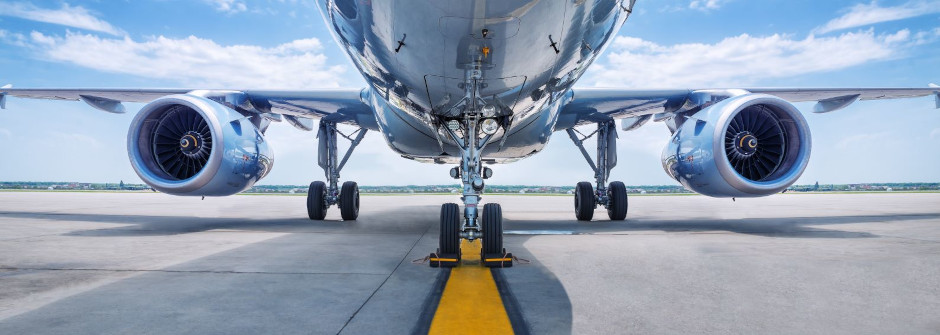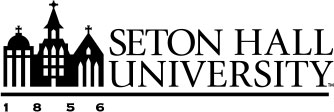
Navigating the Airport
Reviewing the airport check-in and security processes can help you be a well-informed traveler throughout your study abroad program. Be sure to review the following stages and considerations ahead of time to ensure you’re comfortable and well-prepared for travel.
Departing the Airport
We advise that you arrive at the airport no later than three hours before your departure to avoid any potential delays travelling to the airport and maneuvering through airport processes. At the airport, make sure to always keep your belongings close to you.
- Check-In: When you arrive at your terminal, make sure to follow the signs for departures. If
you need to check in your bags or print out your boarding pass, visit the check-in
kiosk for your airline. Make sure to have your passport and confirmation number available
so the agent can check in your luggage and print your boarding pass.
- Many airlines offer online check-in on their websites, which you can do 24 hours ahead of your flight. If you complete the check-in process online, you may drop off your baggage at the check-in kiosk for your airline when you arrive at the airport.
- Security Checkpoint: After checking in, follow the appropriate signs leading to your gate number. You
must go through the security process before heading to your gate.
- When you enter the security check area, make sure to have your passport and boarding pass on hand to present to the security agent at the booth.
- Make sure to dispose of any full bottles of liquid over 3 ounces before you go through security – TSA will have you throw them out. You are allowed to have empty bottles. Any other liquid items 3 ounces or less must be packed into your checked luggage.
- Your carry-on luggage must be placed onto rollers for screening. Be prepared to remove your shoes, any metal accessories (jewelry, belts), and anything you may have in your pockets, which must be placed into separate bins. All electronics must also be placed into bins to pass through the scanner.
- After placing all your belongings on the rollers, pass through the body scan. You may be randomly chosen for a pat-down or additional screening, which you may request to be done in a private space.
- Once you’ve completed the security process, make sure to collect all your belongings before going to your gate.
- Waiting for Your Flight: After leaving the security area, make sure to check that your flight is on time and
will arrive at your gate. You may find your flight status and gate details on monitors
throughout the airport.
- Make sure to follow the signs that lead to your gate number. If you are in a larger airport, check airport maps to see if additional transportation is needed to reach your gate – many airports have trams that stop at different gates.
- When you arrive at your gate, check the monitor at the gate desk to confirm whether this is the appropriate gate for your flight – there may have been gate changes not reflected in other parts of the airport.
- It is important to pay attention to any announcements made in your terminal, as these messages may impact your flight.
- Missed Your Flight? If you missed your flight after completing the security process, or if it is severely
delayed or cancelled, visit the agents at your gate and request assistance. Visit
your airline’s ticketing/check-in desk for assistance if you missed your flight before
security.
-
- If any flight changes extensively impact your arrival to your host location, you may need to contact your program leader and emergency contacts to update them about your situation.
-
Arriving at Your Destination
Upon your arrival in your host country, you will have to undergo the immigration process at the airport. Before you can retrieve your luggage and exit the airport, you will need to visit the customs agency – make sure to follow the appropriate signs to the immigration kiosks.
- Make sure you have all your travel documents, including your passport, visa, and any required proof of immunization. You may also be asked to provide letters of confirmation or support regarding your study abroad program.
- Some countries may also ask you to complete a customs form during your flight to present it to the immigration officer upon your arrival.
- Be sure to look over the banned substances list for your destination country and avoid bringing them into the airport.
- Officers may ask you some questions regarding your stay. Questions include: "What is the purpose of your visit? How long are you staying in your host country, and where will you be staying?"
- After questioning, officers may also need to take your fingerprints and/or your photo. After you have been approved, the officer will stamp your passport and you may enter the country.
- Some passengers may be chosen for secondary inspection based on random checks or inaccurate documentation. You may be asked to leave your queue and visit a separate room for inspection. Passengers who are denied admission into the country after this secondary inspection will be sent back to their country of origin.
Conquering Jet Lag
When you fly into a new time zone, your body will struggle to adjust to your new location for a short period of time. Jet lag is a temporary condition that affects your energy levels and your awareness, leaving you drowsy upon your arrival. The following tips will help you prepare for jet lag and take care of yourself once you arrive at your host destination.
- Rest well before your departure. Preparing for your study abroad experience is a stressful and exciting experience - however, don’t forget to take care of yourself ahead of your trip – you want to be as healthy and well-rested as you can be when you arrive. Try to make time to rest by preparing for your departure a few days before your actual travel date. Including some time to rest in your schedule ahead of your flight will best prepare your physical and mental health for the challenges ahead.
- Take the flight to rest and relax. You will want to take advantage of your first day in your host country once you arrive – taking a nap will help you recharge from your time spent in the airport and prepare your body for your travels ahead.
- Once you arrive, try to stay awake and match the local bedtime. While you may be tempted to go to sleep after travelling, it will be more difficult for you to adjust to your host destination’s schedule. Consider taking a walk around your host city and exploring your surroundings!
U.S. Customs and Re-Entry
Upon your arrival back to the United States, you will have to go through the US customs process. Just as you arrive at your host destination, make sure to follow the signs directing toward the customs kiosks and have the appropriate documents prepared. After you have been approved by the customs agent for reentry, you will be able to retrieve your luggage and exit the airport.
- Ahead of your arrival at the airport, you will be asked to complete a Customs Declaration Form. On your return flight to the US, flight attendants will distribute these forms for you to fill out, which ask questions about your trip itinerary and any purchases you made while abroad. Make sure to have this form ready when you arrive at customs.
- You may also download the Mobile Passport Control app on your phone – this app allows American and Canadian citizens to create a traveler profile and complete a paperless customs declaration form. The app will generate a QR code that you will present with your passport to the customs officer for reentry.
- When you purchase any items outside of the United States, you are responsible for paying a duty tax upon arrival, which will depend on the items you purchased and their value. However, each traveler is eligible for exemption on certain goods up to a certain value. U.S. Customs and Border Protection details further information about paying duties and declaring goods at customs here.
- Make sure to follow the signs to enter the appropriate customs lane and wait for your interview with the customs agent. At the customs kiosk, you will have to answer questions about your background and the nature of your trip, as well as any goods you are bringing back to the United States. You will be asked to present the customs form (or your mobile device) and your passport as well.
- Customs agents have the authority to search you and your belongings – your luggage may be opened at the exam station. Following the examination, make sure you have all your belongings when you repack your luggage.
- After you have been approved for reentry, you will be allowed to continue through the airport to the baggage claim and the exit.

